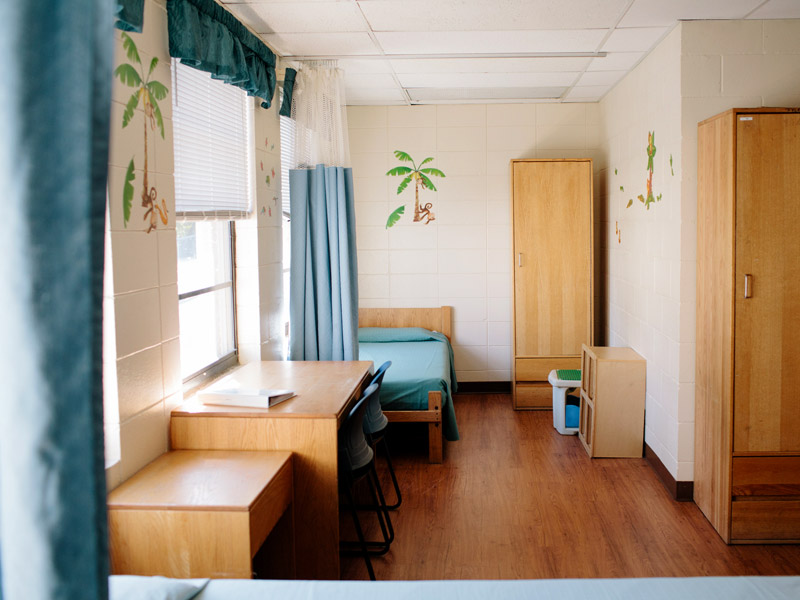Learn about the side effects, causes, signs and symptoms of depression. Millcreek of Magee Treatment Center offers the best residential treatment and home-based programs for children & adolescents struggling with depression.
Understanding Depression
Learn more about depression
When a child or adolescent experiences symptoms synonymous with depression, it is likely that his or her academic performance, social interactions, and emotional health are adversely affected. Young people with this condition often experience ongoing feelings of hopelessness, sadness, and helplessness and frequently find it difficult to cope with life’s stressors. These symptoms, of which can be ongoing or occur in episodes, can lead to low self-esteem and the use or abuse of substances. Prolonged depression can also render a youth susceptible to engaging in self-harming behaviors, the manifestation of suicidal ideation, and the development of another mental illness. Fortunately, there are viable treatment options available that can alleviate the symptoms of depression and reduce a youth’s chances of experiencing the harmful effects that can occur if treatment is not sought. Young people who partake in such treatment are ultimately able to learn skills for identifying and managing symptoms, new methods for coping, and a greater understanding of how depression can impact their lives. Lastly, parents and caregivers who help their child receive such care can learn new ways to assist their child in living a happy, healthy life, free from the crippling symptoms of depression.
Statistics
Depression statistics
Depression is one of the most common mental health conditions diagnosed among individuals of all ages. The Centers for Disease Control and Prevention (CDC) has done extensive research on the prevalence of this disorder and has subsequently concluded that just over 3% of children meet diagnostic criteria for this mental illness. Additionally, it has been realized that adolescents are affected by depression as nearly 13% of youth in this stage of development grapple with depression symptoms. Furthermore, the CDC estimated that only half of young people who have depressive disorders actually receive treatment to care for symptoms of this mental health condition.
Causes and Risk Factors
Causes and risk factors for depression
There are many contributing factors that can lead to the development of a depressive disorder. Experts in the field of mental health agree that a person’s genetics, physiological makeup, environmental influences, and other risk factors play an integral role in the onset of depression. Consider the following explanations when trying to understand the causes and risk factors for depression.
Genetic: Through studies that examined prevalence rates of depression among individuals who share similar genes, researchers have concluded that depression is a heritable mental health condition. Especially for those with a first-degree relative who meets diagnostic criteria for a depressive disorder, people have a 50% chance of eventually displaying signs of depression at some point in life. In terms of children and adolescents, this increased likelihood also holds true and can lead to the onset of depressive symptoms during childhood.
Physical: Extensive research on neurotransmitters in the human brain has concluded that certain mental health conditions are known to be triggered by, or cause the imbalance of, neurochemicals in the brain. When a person struggles with depression, neurotransmitters that regulate a person’s emotions and ability to cope with stress are known to be adversely affected. Especially for those with a family history of depression, there is an increased likelihood for these neurotransmitters to be imbalanced.
Environmental: Child and adolescent mental health experts recognize the significance of a person’s environment when trying to understand the development of mental illnesses such as depression. The primary environment in which a child is raised, in addition to circumstances that a young person is exposed to, can influence the onset of depression symptoms. Victimization in the form of abuse or neglect can make a child or adolescent more vulnerable to the development of depression symptoms. Lastly, exposure to ongoing stress or experiences with trauma could also result in a depression diagnosis at some point in a youth’s life.
Risk Factors:
- Being female
- Family history of depression or other mental illnesses
- Personal history of other mental health conditions
- Family or personal history of substance use or abuse
- Experiencing fluctuations in hormone levels
- Low socioeconomic status
- Being a victim of abuse and/or neglect
- Exposure to trauma
- Exposure to chronic stress
- Being the victim of a crime
- Being bullied by peers
- Having low-self esteem
- Experiencing abrupt life changes
Signs and Symptoms
Signs and symptoms of depression
The severity of the symptoms can greatly affect the apparent signs that infer a youth is grappling with depression. Moreover, the age of the sufferer can impact the obviousness of depression signs and symptoms. Consider the following behavior, physical, cognitive, and psychosocial symptoms of depression if you suspect that your child is battling this mental health condition and consider treatment to alleviate any symptoms present:
Behavioral symptoms:
- Lethargy
- Crying
- Poor academic performance
- Missing school
- Chronic lateness to class
- Declined participation in things or activities that were once enjoyed
- Angry or emotional outbursts
- Social withdrawal or isolation
- Disturbed sleep patterns
- Engaging in risky behaviors
- Self-harming behaviors
Physical symptoms:
- Psychomotor agitation
- Insomnia or hypersomnia
- Headaches or migraines
- Fluctuations in weight
- Stomachaches
- Problems digesting food
- Body aches or pain
- Injuries as a result of self-harm
Cognitive symptoms:
- Inability to concentrate
- Difficulty forming memories
- Impaired decision-making
- Slowed thinking
Psychosocial symptoms:
- Lowered self-esteem
- Negative attitude
- Feelings of helplessness
- Hopeless feelings
- Irritability
- Feelings of guilt
- Worthless feelings
- Increased anxiety
- Angry outbursts
Effects
The effects of depression
Pervasive depression symptoms can produce several adverse effects for an individual when symptoms of this disorder are allowed to persist. For children and adolescents who are struggling with a depressive disorder, social, emotional, and physical development can be affected and stunted as a result. The listed effects could occur if a young person does not receive care for depression symptoms:
- Development of another mental health condition
- Increased conflict with others
- Social withdrawal or isolation
- Drastic changes in weight
- Insomnia
- Impaired academic functioning
- Truancy
- Frequent absences from school
- Academic failure
- Disciplinary action
- Expulsion from school
- Somatic symptoms of pain
- Substance abuse
- Self-injury
- Suicidal ideations
- Suicide attempts
Co-Occurring Disorders
Depression and co-occurring disorders
Depression symptoms can cause a great deal of emotional turmoil for an individual. In fact, symptoms of this mental health condition can become so debilitating that another mental illness can begin to develop at the same time. Additionally, some symptoms of mental health disorders can trigger the onset of depression and lead to an eventual diagnosis of more than one mental health condition. The following disorders are examples of such mental illnesses that are known to be present and diagnosable at the same time as depression:
- Anxiety disorders
- Post-traumatic stress disorder
- Attention-deficit/hyperactivity disorder
- Anorexia nervosa
- Bulimia nervosa
- Borderline personality disorder
- Substance use disorders



